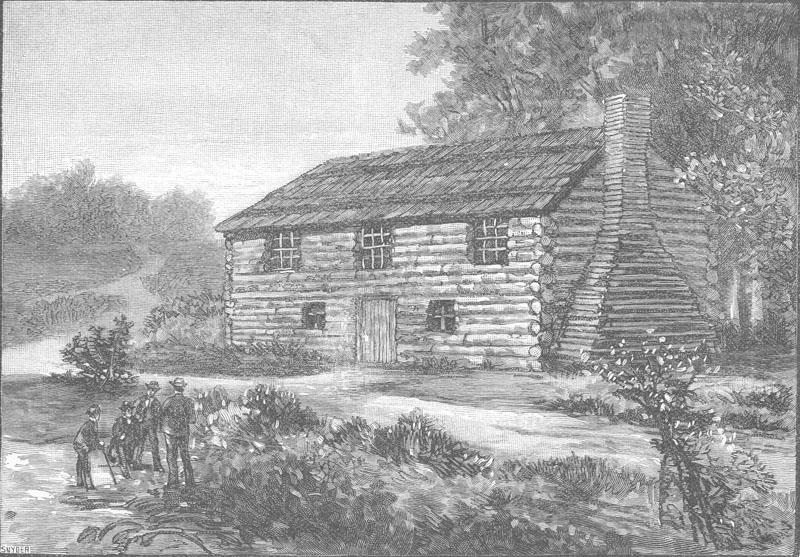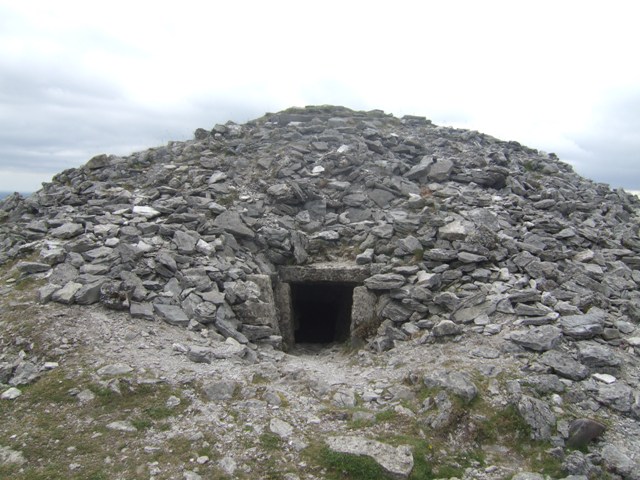|
Paul Devereux
Paul Devereux (born 1945) is a British author, researcher, lecturer, broadcaster, artist and photographer based in the UK. Devereux is a co-founder and the managing editor of the academic publication ''Time & Mind – the Journal of Archaeology, Consciousness and Culture'', a research associate with the Royal College of Art (2007–2013), and a Research Fellow with the International Consciousness Research Laboratories (ICRL) group at Princeton University. Paul Devereux' work primarily deals with archaeological themes, especially archaeoacoustics (the study of sound at archaeological sites), the anthropology of consciousness (ancient and pre-modern worldviews), ecopsychology, unusual geophysical phenomena, and consciousness studies, spanning the range from academic to popular. He has written or co-written 28 books since 1979. He originated two Channel 4 (UK) television documentaries. Biography Paul Devereux grew up in Leicester. He painted and studied at the Ravensbourne Colleg ... [...More Info...] [...Related Items...] OR: [Wikipedia] [Google] [Baidu] |
Princeton University
Princeton University is a private university, private Ivy League research university in Princeton, New Jersey, United States. Founded in 1746 in Elizabeth, New Jersey, Elizabeth as the College of New Jersey, Princeton is the List of Colonial Colleges, fourth-oldest institution of higher education in the United States and one of the nine colonial colleges chartered before the American Revolution. The institution moved to Newark, New Jersey, Newark in 1747 and then to its Mercer County, New Jersey, Mercer County campus in Princeton nine years later. It officially became a university in 1896 and was subsequently renamed Princeton University. The university is governed by the Trustees of Princeton University and has an endowment of $37.7 billion, the largest List of colleges and universities in the United States by endowment, endowment per student in the United States. Princeton provides undergraduate education, undergraduate and graduate education, graduate instruction in the hu ... [...More Info...] [...Related Items...] OR: [Wikipedia] [Google] [Baidu] |
The Old Straight Track
''The Old Straight Track: Its Mounds, Beacons, Moats, Sites and Mark Stones'' is a book by Alfred Watkins, first published in 1925, describing the existence of alleged ley lines in Great Britain. Presentation Watkins presents a methodical and thorough exposition of his theories of ley lines, following an earlier much shorter publication, "Early British Trackways" (1922). The book has a preface, thirty chapters, four appendices and an index. There are many figures, and photographs taken by the author. The book is considered the first book written about leys, and the first book to document and map alleged ley lines in Britain, primarily southern England. According to a review in ''The Geographical Journal'' of the Royal Geographical Society, Watkins sought to prove that "mounds, moats, beacons and markstones fall into strait tracks, i.e. sighted lines, throughout Britain, with fragmentary evidence of trackways on the alignments." The book was disregarded by archaeologists but sa ... [...More Info...] [...Related Items...] OR: [Wikipedia] [Google] [Baidu] |
1945 Births
1945 marked the end of World War II, the fall of Nazi Germany, and the Empire of Japan. It is also the year concentration camps were liberated and the only year in which atomic weapons have been used in combat. Events World War II will be abbreviated as “WWII” January * January 1 – WWII: ** Germany begins Operation Bodenplatte, an attempt by the ''Luftwaffe'' to cripple Allied air forces in the Low Countries. ** Chenogne massacre: German prisoners are allegedly killed by American forces near the village of Chenogne, Belgium. * January 6 – WWII: A German offensive recaptures Esztergom, Hungary from the Soviets. * January 9 – WWII: American and Australian troops land at Lingayen Gulf on western coast of the largest Philippine island of Luzon, occupied by Japan since 1942. * January 12 – WWII: The Soviet Union begins the Vistula–Oder Offensive in Eastern Europe, against the German Army. * January 13 – WWII: The Soviet Union begins the East Prussia ... [...More Info...] [...Related Items...] OR: [Wikipedia] [Google] [Baidu] |
Living People
Purpose: Because living persons may suffer personal harm from inappropriate information, we should watch their articles carefully. By adding an article to this category, it marks them with a notice about sources whenever someone tries to edit them, to remind them of WP:BLP (biographies of living persons) policy that these articles must maintain a neutral point of view, maintain factual accuracy, and be properly sourced. Recent changes to these articles are listed on Special:RecentChangesLinked/Living people. Organization: This category should not be sub-categorized. Entries are generally sorted by family name In many societies, a surname, family name, or last name is the mostly hereditary portion of one's personal name that indicates one's family. It is typically combined with a given name to form the full name of a person, although several give .... Maintenance: Individuals of advanced age (over 90), for whom there has been no new documentation in the last ten ... [...More Info...] [...Related Items...] OR: [Wikipedia] [Google] [Baidu] |
British Parapsychologists
British may refer to: Peoples, culture, and language * British people, nationals or natives of the United Kingdom, British Overseas Territories and Crown Dependencies. * British national identity, the characteristics of British people and culture * British English, the English language as spoken and written in United Kingdom of Great Britain and Northern Ireland and, more broadly, throughout the British Isles * Celtic Britons, an ancient ethno-linguistic group * Brittonic languages, a branch of the Insular Celtic language family (formerly called British) ** Common Brittonic, an ancient language Other uses *People or things associated with: ** Great Britain, an island ** British Isles, an island group ** United Kingdom, a sovereign state ** British Empire, a historical global colonial empire ** Kingdom of Great Britain (1707–1800) ** United Kingdom of Great Britain and Ireland (1801–1922) * British Raj, colonial India under the British Empire * British Hong Kong, colonial H ... [...More Info...] [...Related Items...] OR: [Wikipedia] [Google] [Baidu] |
Mythographers
Myth is a genre of folklore consisting primarily of narratives that play a fundamental role in a society. For scholars, this is very different from the vernacular usage of the term "myth" that refers to a belief that is not true. Instead, the veracity of a myth is not a defining criterion. Myths are often endorsed by religious (when they are closely linked to religion or spirituality) and secular authorities. Many societies group their myths, legends, and history together, considering myths and legends to be factual accounts of their remote past. In particular, creation myths take place in a primordial age when the world had not achieved its later form. Origin myths explain how a society's customs, institutions, and taboos were established and sanctified. National myths are narratives about a nation's past that symbolize the nation's values. There is a complex relationship between recital of myths and the enactment of rituals. Etymology The word "myth" comes from Ancie ... [...More Info...] [...Related Items...] OR: [Wikipedia] [Google] [Baidu] |
John Steele (aromatic Consultant)
John Steele may refer to: Politics * John Steele (Nova Scotia politician) (died c. 1762), surgeon and political figure in Nova Scotia * John Steele (North Carolina politician) (1764–1815), U.S. Representative from North Carolina * John Hardy Steele (1789–1865), Governor of New Hampshire * John Nevett Steele (1796–1853), U.S. Congressman from Maryland * John B. Steele (1814–1866), U.S. Representative from New York * John Yellow Bird Steele, president of the Oglala Sioux Tribe Sports * John Steele (cricketer, born 1905) (1905–1990), English cricketer * Johnny Steele (1916–2008), Scottish footballer and football manager * John Steele (cricketer, born 1946), English cricketer * John Steele (ski jumper) (1909-1996), American Olympic ski jumper Other people * John Steele (pioneer) (1821–1903), Mormon pioneer and doctor * John Washington Steele (1843–1920), Coal Oil Johnny, oilman * John Steele (paratrooper) (1912–1969), American paratrooper * John Steele (oce ... [...More Info...] [...Related Items...] OR: [Wikipedia] [Google] [Baidu] |
Pythagoras
Pythagoras of Samos (; BC) was an ancient Ionian Greek philosopher, polymath, and the eponymous founder of Pythagoreanism. His political and religious teachings were well known in Magna Graecia and influenced the philosophies of Plato, Aristotle, and, through them, Western philosophy. Modern scholars disagree regarding Pythagoras's education and influences, but most agree that he travelled to Croton in southern Italy around 530 BC, where he founded a school in which initiates were allegedly sworn to secrecy and lived a communal, ascetic lifestyle. In antiquity, Pythagoras was credited with mathematical and scientific discoveries, such as the Pythagorean theorem, Pythagorean tuning, the five regular solids, the theory of proportions, the sphericity of the Earth, the identity of the morning and evening stars as the planet Venus, and the division of the globe into five climatic zones. He was reputedly the first man to call himself a philosopher ("lover of wi ... [...More Info...] [...Related Items...] OR: [Wikipedia] [Google] [Baidu] |
Cairn
A cairn is a human-made pile (or stack) of stones raised for a purpose, usually as a marker or as a burial mound. The word ''cairn'' comes from the (plural ). Cairns have been and are used for a broad variety of purposes. In prehistory, they were raised as markers, as memorials and as burial monuments (some of which Chambered cairn, contained chambers). In the modern era, cairns are often raised as landmarks, especially to mark the summits of mountains, and as Trail blazing, trail markers. They vary in size from small piles of stones to entire artificial hills, and in complexity from loose conical rock piles to elaborate megalithic structures. Cairns may be painted or otherwise decorated, whether for increased visibility or for religious reasons. History Europe The building of cairns for various purposes goes back into prehistory in Eurasia, ranging in size from small rock sculptures to substantial human-made hills of stone (some built on top of larger, natural hills). ... [...More Info...] [...Related Items...] OR: [Wikipedia] [Google] [Baidu] |
Glockenspiel
The glockenspiel ( ; or , : bells and : play) or bells is a percussion instrument consisting of pitched aluminum or steel bars arranged in a Musical keyboard, keyboard layout. This makes the glockenspiel a type of metallophone, similar to the vibraphone. The glockenspiel is played by striking the bars with Percussion mallet, mallets, often made of a hard material such as metal or plastic. Its clear, high-pitched tone is often heard in Orchestra, orchestras, Concert band, wind ensembles, Marching band, marching bands, and in popular music. Terminology In German, a carillon is also called a , and in French, the glockenspiel is sometimes called a . It may also be called a () in French, although this term may sometimes be specifically reserved for the keyboard glockenspiel. In Italian, the term () is used. The glockenspiel is sometimes erroneously referred to as a xylophone. (The xylophone has wooden bars, unlike the glockenspiel which has metal bars.) The Pixiphone, a type of ... [...More Info...] [...Related Items...] OR: [Wikipedia] [Google] [Baidu] |
Stonehenge
Stonehenge is a prehistoric Megalith, megalithic structure on Salisbury Plain in Wiltshire, England, west of Amesbury. It consists of an outer ring of vertical sarsen standing stones, each around high, wide, and weighing around 25 tons, topped by connecting horizontal lintel stones, held in place with mortise and tenon joints, a feature unique among contemporary monuments. Inside is a ring of smaller bluestones. Inside these are free-standing trilithons, two bulkier vertical sarsens joined by one lintel. The whole monument, now ruinous, is aligned towards the sunrise on the summer solstice and sunset on the winter solstice. The stones are set within Earthwork (archaeology), earthworks in the middle of the densest complex of Neolithic British Isles, Neolithic and Bronze Age Britain, Bronze Age monuments in England, including several hundred ''tumuli'' (burial mounds). Stonehenge was constructed in several phases beginning about 3100 BC and continuing until about 1600 B ... [...More Info...] [...Related Items...] OR: [Wikipedia] [Google] [Baidu] |




